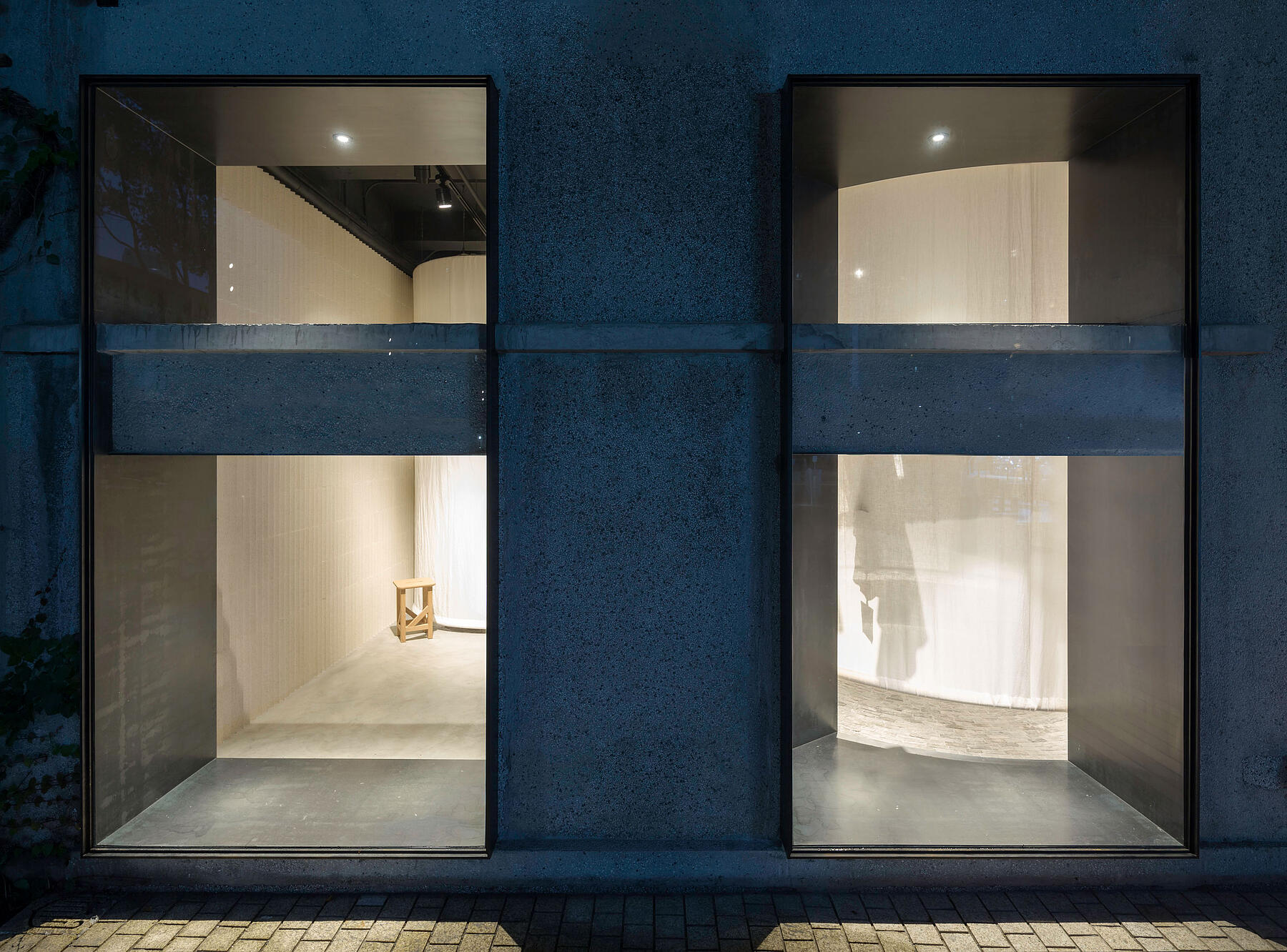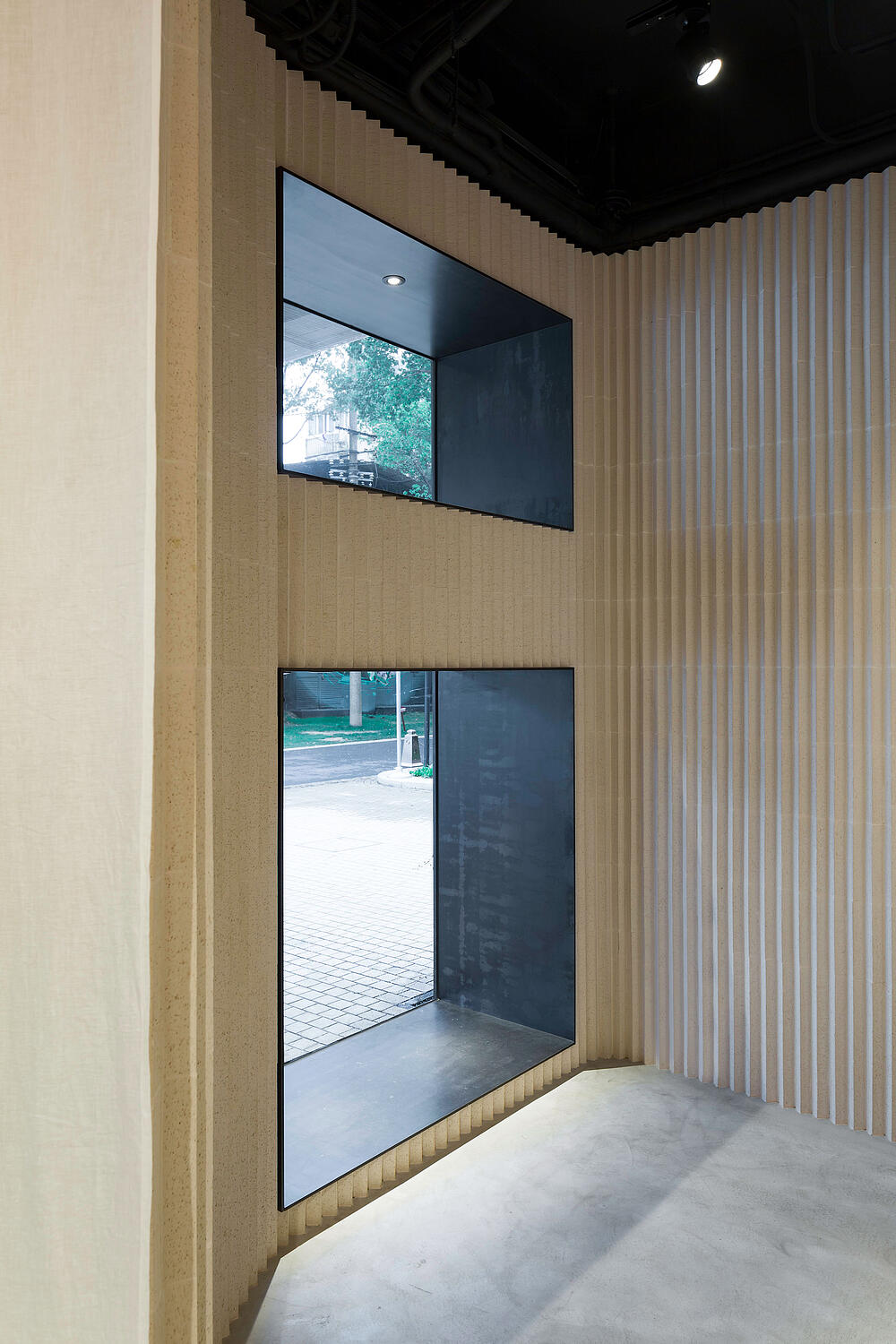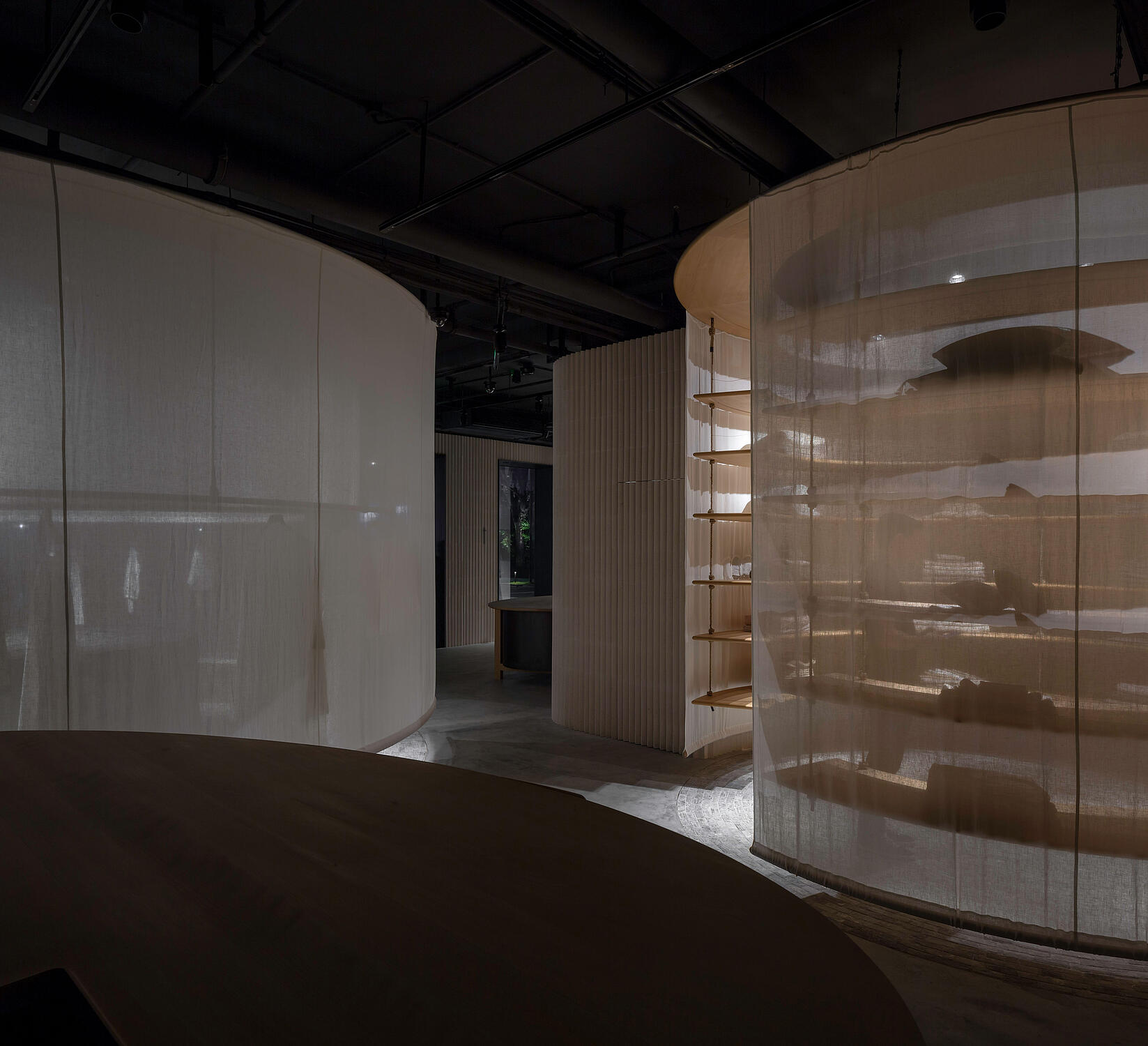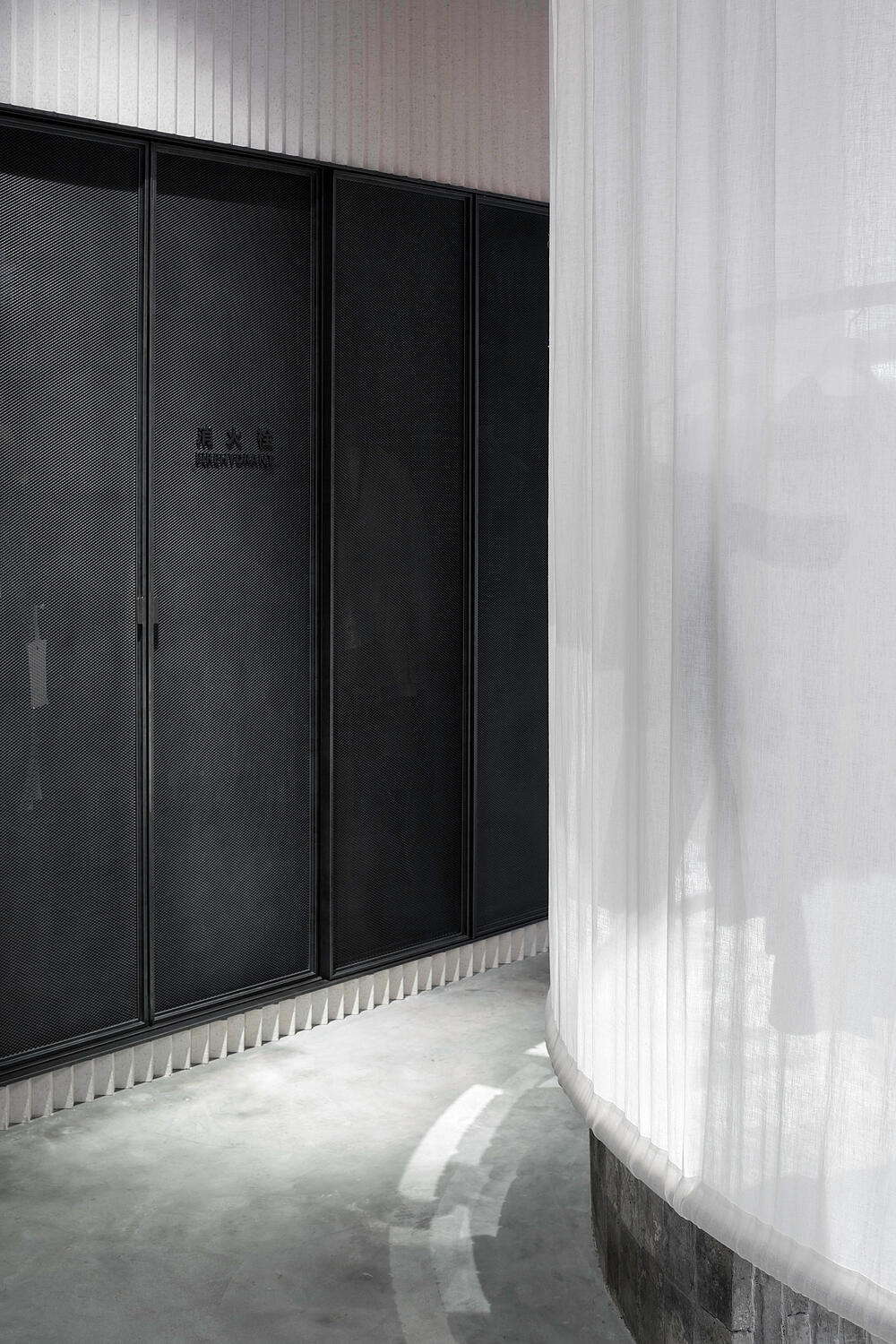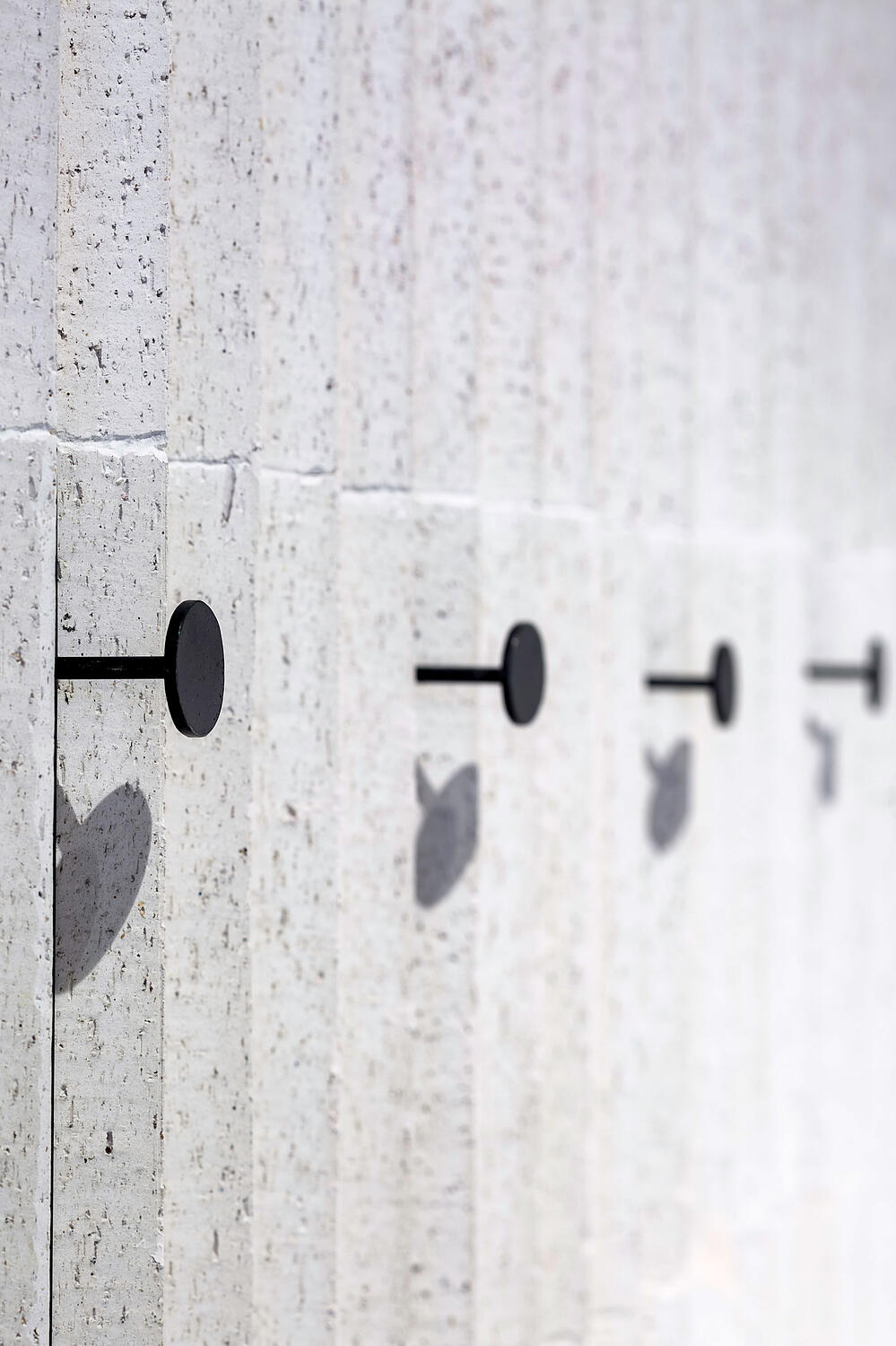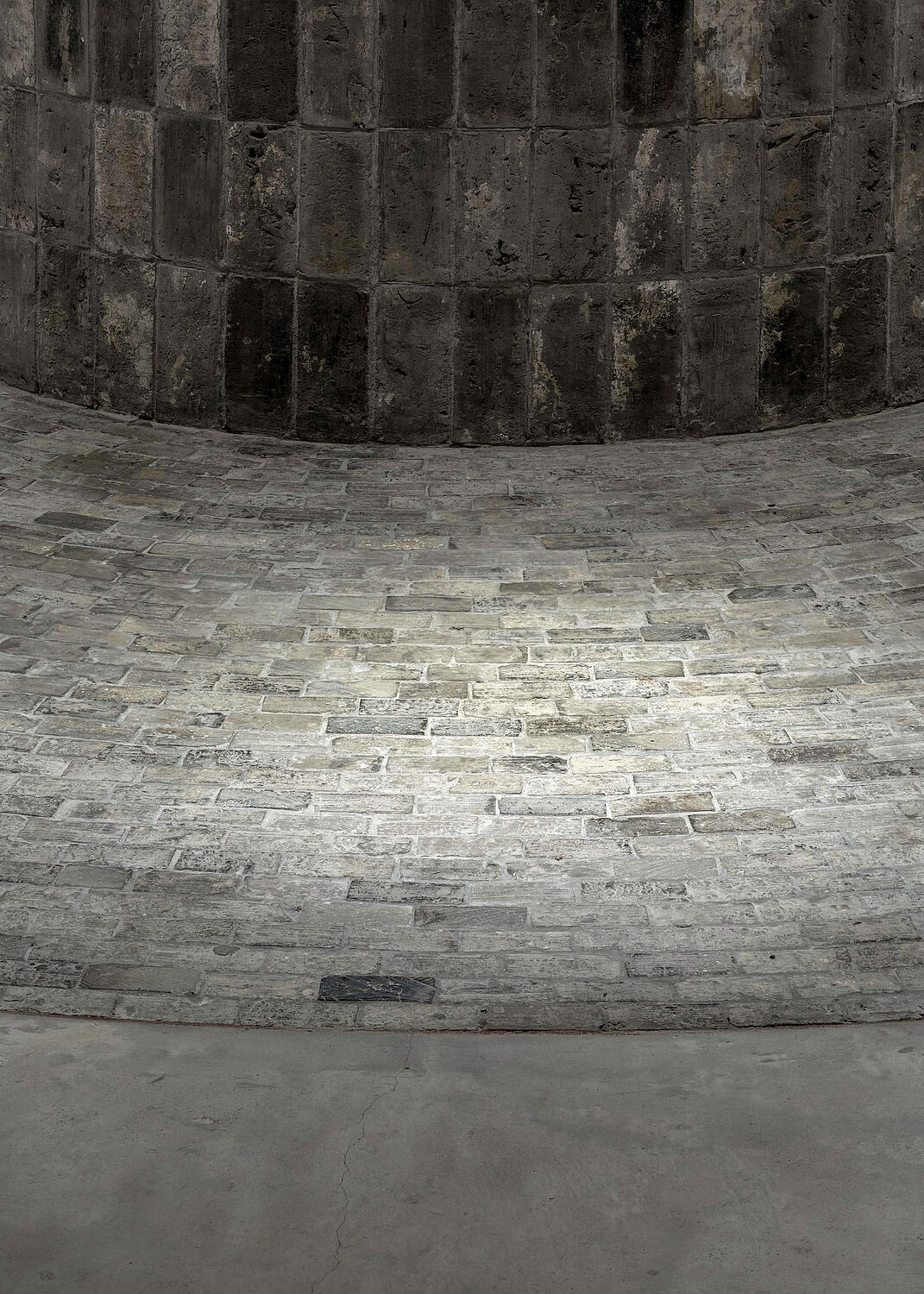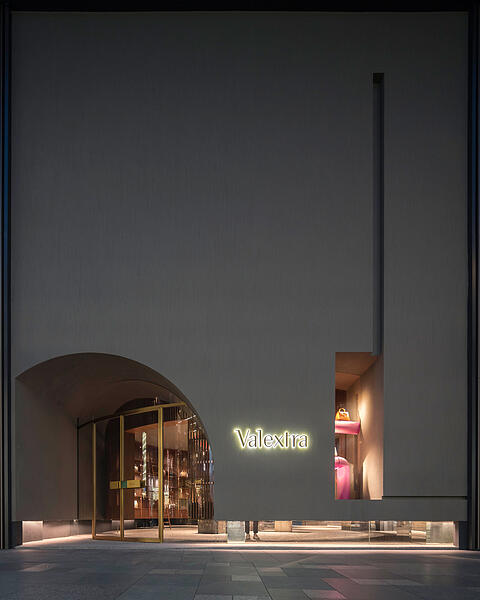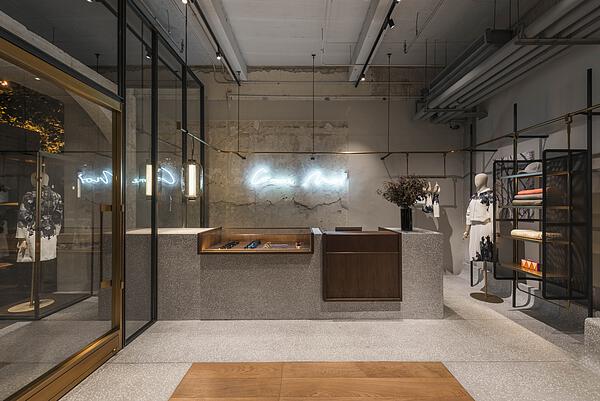Constellation of Enclosures | Jisifang Boutique
The Jisifang Boutique is located in Shanghai’s Columbia Circle, a revitalized compound consisting of preserved colonial monuments and former industrial buildings dating back to the 1920s. Sitting at the corner of the site, this boutique for a fabric manufacturer turned fashion brand occupies the ground floor of a postindustrial building – an urban artefact featuring an existing utilitarian concrete façade. The driving concept for the project centres on the studied relationship between architecture and fashion, and the unusual application of suspended textiles to define spatial enclosure.
The storefront, which is oriented towards a public plaza, is composed of a series of regularly spaced deep vertical windows. The exterior walls are treated as a thick, continuous encasing shell, which is then punched at regular intervals, creating apertures that seduce the visitor to explore the interior. The interior, in contrast, abandons any rectilinear geometry and is instead composed of a series of circular, spatial focal points. The departure for the interior concept is based on the nineteenth-century German architectural theorist Gottfried Semper’s notion of the primitive textile wall as one of the four irreducible elements of architecture, which is a rejection of the conventional origin story of the primitive hut as the archetype underpinning architectural thinking.7 Returning to the hung textile as a means of enclosure, we explore and highlight the brand’s unique heritage in fabric-making.
Once inside the store, visitors find themselves immersed in a constellation of suspended, cylindrical fabric ‘lanterns’ that form pockets of enclosure. Despite being made of virtually weightless fabric, the hung partitions vary in scale and character to give each retail zone a unique spatial identity. Each ‘lantern’ demarcates a category within the brand’s oeuvre and provides a contemplative space that harmonizes and celebrates its diverse contents. These luminescent enclosures are distributed in the plan to contain different functions: a private changing room, an area displaying home goods, and a large 7 m (23 ft)-diameter showroom with a central display table. Hung from circular wooden plates, the draping walls simultaneously provide a muted backdrop to foreground the hanging garments within and obscure visual clutter from the larger context. As the visitor walks around the fabric screens, the layers of sheer drapery at the same time delineate and blur thresholds.
The space is carefully assembled from a natural palette of organic cotton, light oak, matte tile, raw steel, reclaimed brick and unfinished concrete. The ground and the encasing walls carry a sober character in opposition to the airiness of the lanterns. The ground plane is treated like a heavy earthwork finished in concrete and concentric patterns of reclaimed bricks. At times rising to become tables, the brick floor creates an interior landscape playing on the tension between the heavy and the ephemeral, the stereotomic and the tectonic. Lined with fluted ivory-coloured terracotta bricks, the perimeter walls are treated as a thickened poché (on a plan, the solid spaces between walls) that binds the curvilinear forms in the interior to the rationally spaced apertures on the façade. Through a series of visual and sensory contrasts, we create an intimate ambience that requires both feeling and contemplation, through a profound understanding of materiality.
Gross Area
130 m²
Status
Complete
Completion Date
June 2018
Duration
January 2018 – June 2018
Address
1st Floor, Building 3, 1262 Yan’an West Road, Shanghai

